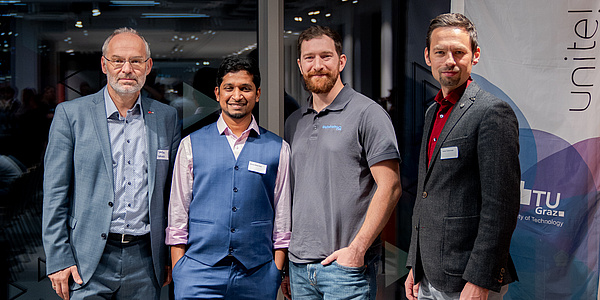Determining the Earth’s gravity field more accurately than ever before

The Earth’s gravity fluctuates from place to place. Geodesists use this phenomenon to observe geodynamic and climatological processes. Using satellite-supported recordings, they document the strong fluctuations and the associated spatial and seasonal distributions of mass on and in the Earth. From this, gravity field models can be calculated by which researchers can track rising sea levels or melting glaciers, investigate regional groundwater reserves more closely or analyse oceanic currents.
A team at the Institute of Geodesy of TU Graz has published a new combined gravity field model. The model, which is called GOCO06S, represents changes in mass on and under the Earth’s surface at unprecedented accuracy.
Model brings together different measuring processes
The name refers to the initiative itself: Gravity Observation Combination (GOCO), in whose framework the model was developed together with international partners. The consortium combines 1.16 billion measurements recorded by 19 satellites. “Due to the combination of data, the strengths of the individual measurement methods can be taken advantage of to the best of our ability. This makes it possible for us to detect changes in the gravity field on a scale of one millionth of the mean force of gravity [Note: 9.81m/s2],” explains Torsten Mayer-Gürr, head of the Working Group of Theoretical Geodesy and Satellite Geodesy at TU Graz’s Institute of Geodesy. To achieve consistent global accuracy, it was decided to do without terrestrial data. Compared to the previous model, results have been improved by 25 percent.
The working group is occupied with determining the temporal changes in the Earth’s gravity and the evaluation of gravity measurements. The Graz team processes data from satellite missions and makes available gravity field solutions to the scientific community. “Our models are also used, for instance, in research into flood events,” says Mayer-Gürr, naming one particular field of activity.
About the Gravity Observation Combination initiative
The GOCO initiative has been around since 2009. It’s aim is to calculate high-precision and high-resolution global gravity field models through the combination of many different data sources. In 2010, the world’s first combination solution from the GRACE and GOCE missions was able to be calculated using the GOCO01s model. The latest model generation GOCO06s combines data from GRACE, GOCE and the kinematic low-Earth-orbit satellites CHAMP, SWARM, TerraSAR-X, TanDEM-X and the laser satellites LAGEOS1/2, Ajisai, Stella, Starlette, LARES, LARETS, Etalon1/2 and BLITS.
This research area is anchored in the Field of Expertise “Sustainable Systems”, one of five strategic foci of TU Graz.
Kontakt
Torsten MAYER-GÜRR
Univ.-Prof. Dr.-Ing.
TU Graz | Institute of Geodesy, Working Group Theoretical Geodesy and Satellite Geodesy
Steyrergasse 30/III, 8010 Graz
Tel. +43 316 873 6359
mayer-guerr@tugraz.at
ifg.tugraz.at




